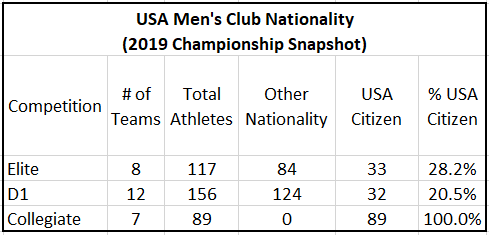
Earlier today, Mike Cavanaugh announced his professional retirement from USA Team Handball: Link
While he no longer will have an official capacity he will still be contributing to the sport as the coach of Air Force and, I would suspect in other ways as well. As long as I’ve been involved with the sport of team handball, there has always been one constant presence: Mike Cavanaugh. And, that’s literally true for anyone (and I mean anyone) involved with the sport in this country. Seriously, if you want to play the Kevin Bacon game for USA Team Handball you will be hard pressed to find anyone who’s not 1 degree of separation. Everybody knows Mike; Everybody.
And, virtually everyone in our small community has interacted with Mike in some capacity. Whether they were a national team player or someone who just discovered the sport and wanted to find out more information they’ve met Mike Cavanaugh. Some of those interactions were trivial, but some of those interactions were also pretty consequential.
On the occasion of his retirement I’ll share one such consequential interaction. One that made a big difference in my life.
Helping an Athlete/Person Make the Right Decision
Way back in 1993 I was at one of those big crossroads points we all face in life. I had just returned from the World Championships where I had represented my country, playing the sport I loved on the World Stage. Sure, we hadn’t come close to winning a match, but for me personally it had still been a great experience. In less than 2 years I had gone from being cut from an Olympic Festival team to starting on defense for the national team. I was on cloud 9 with dreams of grandeur.
After returning from the World Championships I had an office visit with Mike and our then Head Coach, Vojtech Mares, where we talked about my future as a handball player. I was pretty excited. I discussed the possibility of getting a military assignment in Europe so I could play with a club there or simply leaving the Air Force altogether. I was 28 years old and my AF career wasn’t exactly setting the world on fire. (Leaving for several weeks at a time to go play a sport many had never even heard of just didn’t sit well with some of my supervisors.) The Olympics was also just 3 years away and since Atlanta was hosting we had already qualified. The residency program was moving to Philadelphia. I had even started to investigate Aerospace Engineering jobs in the area there.
This little office meeting could have gone a number of different ways. An average (at best) player could have been pumped up with praise. Encouraged to move to Philadelphia and pursue his Olympic dreams. And, from strictly a management stand point that would have been the thing to do. The Philadelphia set up didn’t have enough players. I was a marginal prospect, but a reliable one. I would have helped in terms of practice quality and who knows maybe I would continue to surprise and contribute in a meaningful way.
26 years later I don’t remember exactly what was said, but it was a frank and open discussion. A conversation, that didn’t overly encourage, but one that didn’t discourage either. Fact based about what USA Team Handball’s plans were and how I might fit in those plans. It was a conversation that started out as a discussion about handball, but ended up as a discussion more about me as a person and my future.
I had been skillfully and gently moved down from cloud 9. Still excited about the sport and what I had accomplished, but now in a position to be more thoughtful and analytical. To make a decision with my heart and my head. I did not move to Philadelphia and stayed in the Air Force. A decision that ultimately was best for me.
A Guy with a Lot of Friends and Very Few (in any?) Enemies
I suspect that I’m not the only person in our small handball community that has a similar story they could tell. How Mike has influenced them and made a difference in their life outside of the sport of handball.
What’s truly remarkable, when you think about it, is how we was able to maintain relationships. Think of all the controversial issues and sometimes downright crazy stuff that has happened over the years. All of the heated disagreements on how best to proceed. For sure, I’ve had my complaints and on more than one occasion have disagreed with what was decided.
But, despite all of those disagreements I’ve never had a bad interaction with him. Always professional; Always friendly (as much as possible); Always the diplomat. Maybe there are some folks out there that feel differently, but they are few and far between.
There are lots of ways to measure success. Wins and losses; Medals, money in the bank account, etc. But, if at the end of the day, you cannot even begin to count all the people you’ve had a positive impact on as a coach, as an administrator, as a friend, then count yourself lucky.
Thanks, Mike for all that you have done for the sport in this country…
And, Beat Army!














